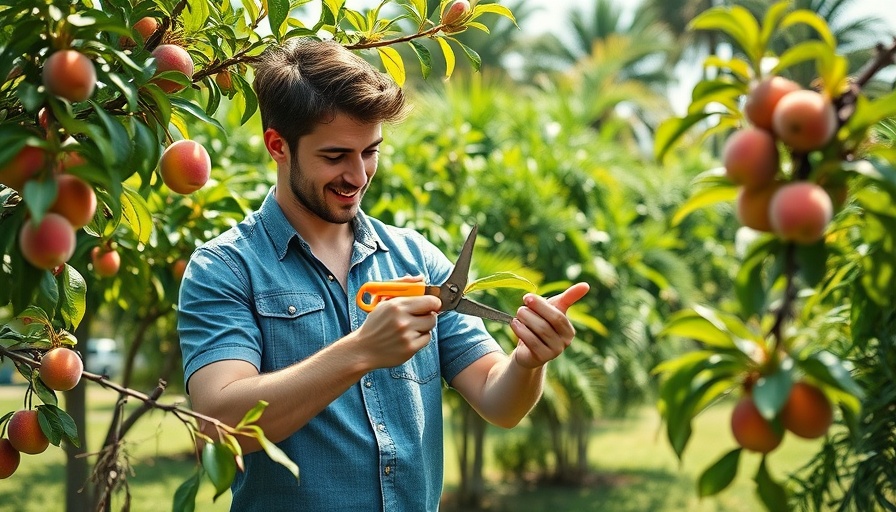
Pruning Peaches: A Gardening Essential for Small Spaces
Pruning peach trees can seem daunting, especially in smaller urban gardens where residents might worry about space. However, understanding the importance of proper pruning techniques can lead to healthier trees and more abundant fruit production. In How I Prune My Peaches..., the video highlights practical steps for maintaining peach trees that will help Metro Vancouver residents maximize their yields without sacrificing valuable garden space.
In How I Prune My Peaches..., the discussion dives into effective pruning techniques, exploring key insights that sparked deeper analysis on our end.
The Benefits of Pruning Peach Trees
Just like any other fruit tree, effective pruning is crucial for peach trees. Not only does it help shape the tree, ensuring it fits well into a smaller garden, but it also promotes better air circulation and sunlight penetration, which are vital for the development of fruits. Regular pruning can also minimize diseases by eliminating dead or diseased branches. Keeping the tree well-maintained enhances the overall look of your garden while providing the sweetest rewards come harvest time.
Tools of the Trade for Effective Pruning
When it comes to pruning peach trees, having the right tools can make a world of difference. Essential tools include sharp pruning shears for making clean cuts, loppers for larger branches, and sometimes even a pruning saw for denser limbs. Investing in high-quality tools will not only make the job easier but also promote healthier tree growth because cleaner cuts heal better.
When to Prune for Maximum Yield
Timing is everything in gardening. Peach trees should generally be pruned in late winter or early spring, just before new growth begins. This allows you to remove any dead wood and shapes the tree structure while avoiding shock to the plant. In urban settings like Metro Vancouver, where space is at a premium, timely pruning ensures you get the best fruit possible without compromising on aesthetics.
Common Misconceptions About Pruning
One of the biggest misconceptions about pruning is that it hurts the tree. In reality, if done correctly, it encourages healthy growth. Many gardeners hesitate to prune too much for fear of damaging their trees, but light, regular pruning is actually beneficial. Additionally, some believe that any cut will heal slowly; however, the right cuts at the right time can significantly enhance a tree’s health.
Neighborhood Insights: Local Peach Varieties
For Metro Vancouver residents, knowing which varieties of peach trees thrive in the local climate can be beneficial. Cold-hardy types such as 'Reliance' or 'Hale Haven' are popular, as they're better suited for the region's cooler temperatures. By sharing local knowledge and experiences, community members can foster a supportive gardening culture that enhances everyone's success.
In exploring the video How I Prune My Peaches..., we uncovered essential pruning tips for peach trees that allow for fruitful gardening in limited spaces. This information encourages not only the responsible cultivation of fruit trees but also strengthens community ties in urban gardening practices.
 Add Row
Add Row  Add
Add 




Write A Comment